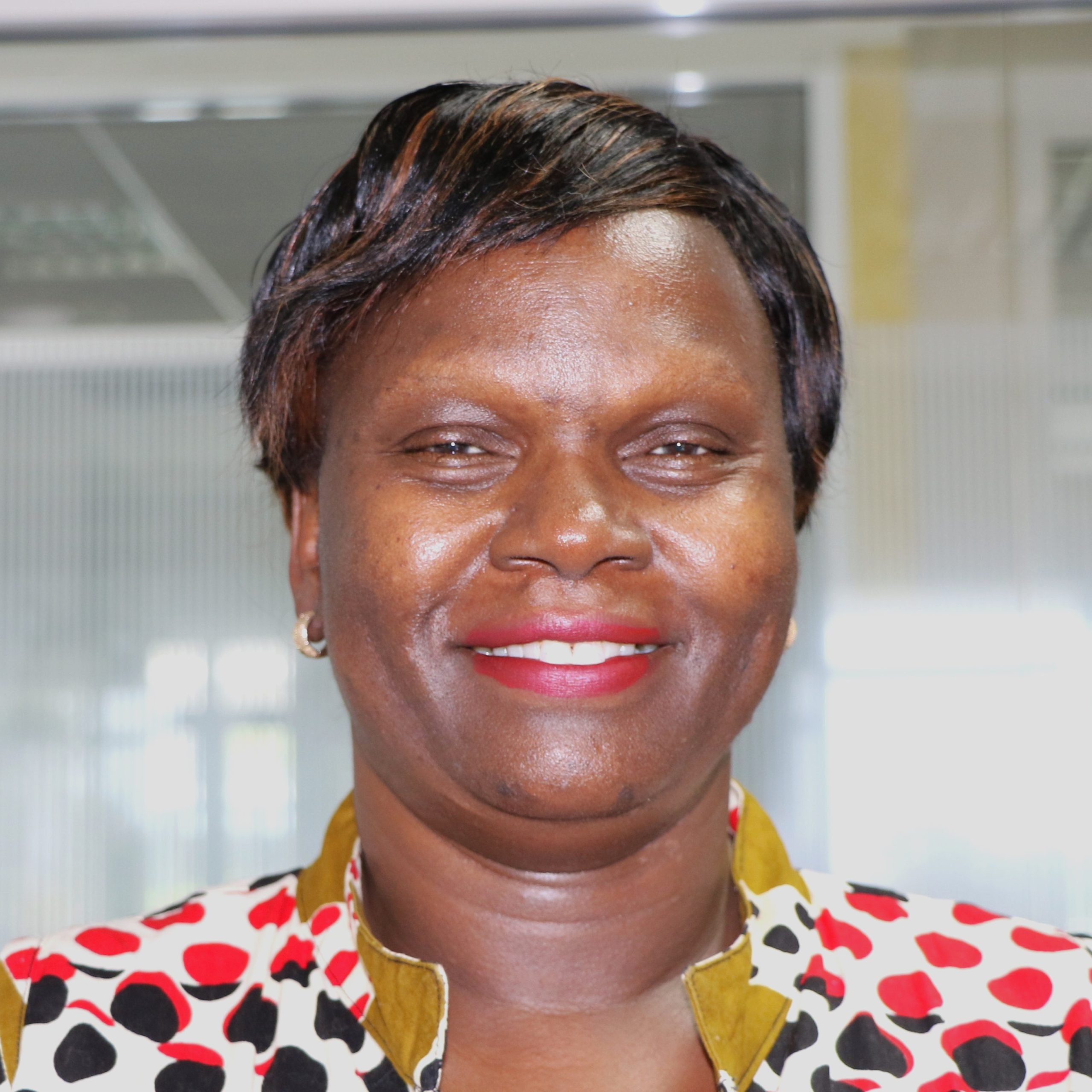CONTRIBUTORS

Benta A. Abuya
Research Scientist I

Davis Muli Musyoki
Communications Officer

Michelle Mbuthia
Senior Communications Officer
Introduction
Public policy development encompasses various policy process streams that cumulatively give way to policy (Kingdon & Stano, 1984). These streams can be divided into three politics, the problems, which refer to the issues and the policy ideas, which can be considered as a policy response. According to Kingdon and Stano (1984), every policy domain can give rise to a “policy window” that policymakers and policy entrepreneurs can exploit to work on a new policy or amend an existing one. A policy window can be described as a specific point in time in a country, or region where there is an opportunity to align the politics behind a problem, the immediate problem in need of solving, and the existence of a policy idea that could provide the necessary solutions. To actualize the policy window are policy entrepreneurs—actors inside or outside of the government of the day—who, owing to their vantage point, can observe and exploit policy windows to develop solutions as part of what ends up into the government’s decision-making process (Mintrom & True, 2022). Particularly, from a coalescence of three process streams, which can be a combination, arises a problem that cannot be ignored, a practical policy solution that can be adopted, and political events that bring the problem to the top of a government agenda (Rose et al., 2020). The importance of policy windows in the policy-making process lies in the creation of opportunities for policy change by providing environments for sudden uptake of knowledge to necessitate the creation of a new policy or policy review in the case of the ETSGP, 2015. Consequently, the solutions are matched with the problem(s) at hand, proposals put forward are connected to political needs, and alternatives are presented when there is a change in the agenda (Rose et al., 2020). All this is also linked to how issues get attention within the government’s agenda, so that policy makers get to focus on them.
The streams, and the link to the 2015 Education and Training Sector Gender Policy
Gender disparities in education have long been a concern in Kenya, with historical inequalities limiting access to quality education for girls. Before introducing the 2015 Education and Training Sector Gender Policy (ETSGP), various barriers, such as socio-cultural norms, economic constraints, and inadequate gender-sensitive policies, contributed to lower enrollment and retention rates for girls. According to UNESCO (2014), Kenya had a significant gender gap in secondary education completion rates, with girls more likely to drop out due to early marriages, teenage pregnancies, and caregiving responsibilities.
The introduction of the ETSGP sought to address these challenges by providing a framework for gender mainstreaming in education policies, curricula, and teacher training. Gender mainstreaming seeks to integrate gender perspective into policies, programs, and projects to ensure that the rights and needs of both women and men are considered, thereby promoting gender equality and the empowerment of women, with the consequence of having a fair, a more just and sustainable society. Over the years, there have been improvements in gender parity, particularly in primary education, but gaps remain in implementation, especially in marginalized and rural areas. At the point that the Ministry of Education in Kenya saw it fit to review the 2015 Education and Training Sector Gender Policy (ETSGP), the government’s commitment was to provide quality education and attain gender parity at all levels of education in the country. This was to ensure attainment of the Sustainable Development Goals 4 and 5 that speak to inclusive and equitable quality education and, lifelong learning opportunities for all, as well as gender equality and empowerment of all women and girls (UN, 2015). The ETGSP was therefore the government’s effort at adhering and contextualizing an international policy commitment. Since then, the Kenyan government has continued to refine her approach to access, equity, and inclusivity in education inorder to reduce disparities in access education from gender, abilities, and location (rural and urban) lenses.
So far, the issue has largely been regarding gender-mainstreaming during curriculum implementation. This includes how the teacher-training curriculum prepares teachers to implement gender-mainstreaming strategies, gender mainstreaming practices inside the classroom, the relationship between effective academic practices that mainstream gender issues and students’ school attendance, choice of subjects, and academic performance as well as key school programs and strategies put in place by the government and/or private sector promote gender equity in basic education. All of these have been because of gaps in the implementation of the 2015 Education and Training Sector Gender policy, and a lack of a monitoring and evaluation framework. Consequently, there has been little evidence of what was working well as part of policy implementation.
The policy window and the entry of the policy entrepreneurs
In 2021, the Ministry of Education began the review process for the ETSGP 2015 by engaging partners to provide perspectives on the policy thus far; existing challenges and proposals as potential alternatives (Rose et al., 2020).
Therefore, the need to generate evidence on the status of gender mainstreaming in basic education and teacher training institutions was important in informing this review process. The African Population and Health Research Center (APHRC) and the Directorate of Policy Partnerships and East African Affairs (DPPEA), at the Ministry of Education seized the policy window (Moon et al. (2014), in the policy review through several key steps: continuous meetings between APHRC and DPPEA; building coalitions and rallying different education stakeholders to support different stages of the policy review; planning ahead and putting together existing and possible solutions, including cocreating primary research to inform the policy review and; following political debates on gender equality and gender mainstreaming.
To ensure this process moved forward, each of the policy entrepreneurs selected by the Ministry of Education had distinct roles that they played during the policy review, including:
- The DPPEA, at the Ministry of Education formed a Technical Working Group (TWG) comprising of various organizations such as APHRC, Population Council, Forum for African Women Educationalists (FAWE), UNESCO, Plan International, and Kenyatta University among other education stakeholders.
- The DPPEA identified partners like the County Directors of Education who provided a list of schools in their counties, approvals to access the schools, as well as offering logistical support to enable research teams to access the vast parts of the counties.
- The DPPEA oversaw the coordination of the different partners working within the gender and education space; the County Education Offices and other partners who were part of the data collection exercises, as well as validation of study findings.
- APHRC was tasked with generating evidence that would inform the policy review process. The team also participated in evidence-sharing workshops convened by the TWG and made presentations on the research study, as well as contributed to discussions on possible areas of focus for future studies. Both APHRC, and the DPPEA also executed joint dissemination efforts at the 2023 Comparative and International Education Society (CIES) International conference as a way of contributing to the knowledge space while also showcasing the power of collaboration with government on education matters.
In conclusion, the presence of a policy window provided by the imminent review of the 2015 Education and Training Sector Gender Policy review contributed to an evidence-informed review of this sector policy. Consequently, it led to the co-creation of a research study, and a platform to have all the education stakeholders on board to give their inputs, enabling organizations to respond to the gender priority area, and have buy-in from the onset.
References
APHRC. (2024). Gender Mainstreaming Practices in Basic Education and Teacher Training in Kenya https://aphrc.org/wp-content/uploads/2024/11/13.11.2024-Gender-Mainstreaming-in-Education-Systems-Report.pdf
Kingdon, J. W., & Stano, E. (1984). Agendas, alternatives, and public policies (Vol. 45). Little, Brown Boston.
Mintrom, M., & True, J. (2022). COVID-19 as a policy window: policy entrepreneurs responding to violence against women. Policy and Society, 41(1), 143-154.
Rose, D. C., Mukherjee, N., Simmons, B. I., Tew, E. R., Robertson, R. J., Vadrot, A. B., . . . Sutherland, W. J. (2020). Policy windows for the environment: Tips for improving the uptake of scientific knowledge. Environmental Science & Policy, 113, 47-54.